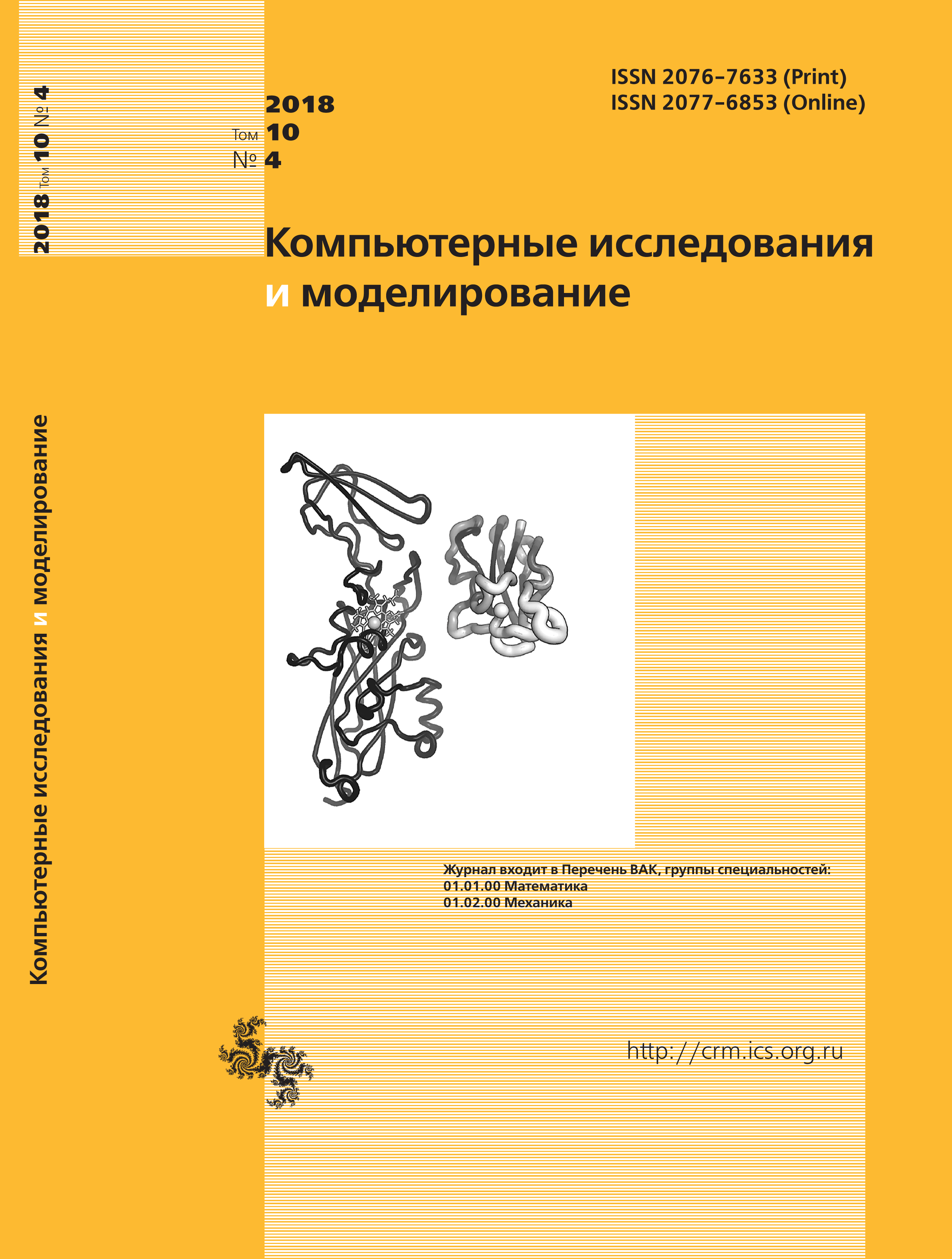All issues
- 2025 Vol. 17
- 2024 Vol. 16
- 2023 Vol. 15
- 2022 Vol. 14
- 2021 Vol. 13
- 2020 Vol. 12
- 2019 Vol. 11
- 2018 Vol. 10
- 2017 Vol. 9
- 2016 Vol. 8
- 2015 Vol. 7
- 2014 Vol. 6
- 2013 Vol. 5
- 2012 Vol. 4
- 2011 Vol. 3
- 2010 Vol. 2
- 2009 Vol. 1
High-Reynolds number calculations of turbulent heat transfer in FlowVision software
This work presents the model of heat wall functions FlowVision (WFFV), which allows simulation of nonisothermal flows of fluid and gas near solid surfaces on relatively coarse grids with use of turbulence models. The work follows the research on the development of wall functions applicable in wide range of the values of quantity y+. Model WFFV assumes smooth profiles of the tangential component of velocity, turbulent viscosity, temperature, and turbulent heat conductivity near a solid surface. Possibility of using a simple algebraic model for calculation of variable turbulent Prandtl number is investigated in this study (the turbulent Prandtl number enters model WFFV as parameter). The results are satisfactory. The details of implementation of model WFFV in the FlowVision software are explained. In particular, the boundary condition for the energy equation used in high-Reynolds number calculations of non-isothermal flows is considered. The boundary condition is deduced for the energy equation written via thermodynamic enthalpy and via full enthalpy. The capability of the model is demonstrated on two test problems: flow of incompressible fluid past a plate and supersonic flow of gas past a plate (M = 3).
Analysis of literature shows that there exists essential ambiguity in experimental data and, as a consequence, in empirical correlations for the Stanton number (that being a dimensionless heat flux). The calculations suggest that the default values of the model parameters, automatically specified in the program, allow calculations of heat fluxes at extended solid surfaces with engineering accuracy. At the same time, it is obvious that one cannot invent universal wall functions. For this reason, the controls of model WFFV are made accessible from the FlowVision interface. When it is necessary, a user can tune the model for simulation of the required type of flow.
The proposed model of wall functions is compatible with all the turbulence models implemented in the FlowVision software: the algebraic model of Smagorinsky, the Spalart-Allmaras model, the SST $k-\omega$ model, the standard $k-\varepsilon$ model, the $k-\varepsilon$ model of Abe, Kondoh, Nagano, the quadratic $k-\varepsilon$ model, and $k-\varepsilon$ model FlowVision.
Copyright © 2018 Zhluktov S.V., Aksenov A.A., Savitskiy D.V.
- , , , , , . Numerical simulation of ice accretion on airplane surface. / HIGH-ENERGY PROCESSES IN CONDENSED MATTER (HEPCM 2019): Proceedings of the XXVI Conference on High-Energy Processes in Condensed Matter, dedicated to the 150th anniversary of the birth of S.A. Chaplygin. — 2019. — V. 2125. — P. 030013. DOI: 10.1063/1.5117395
Indexed in Scopus
Full-text version of the journal is also available on the web site of the scientific electronic library eLIBRARY.RU
The journal is included in the Russian Science Citation Index
The journal is included in the RSCI
International Interdisciplinary Conference "Mathematics. Computing. Education"







